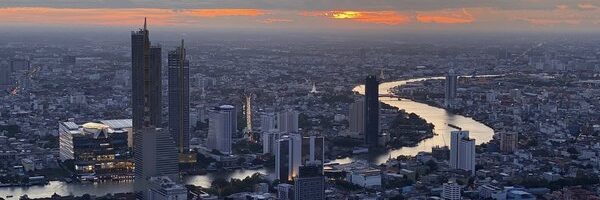
Regenerative fibres: High on hemp
Let me begin my article by clarifying that I did not mean getting high on hemp in a literal way, I meant that it is about time we get high on all the amazing properties hemp has to mitigate climate change and become a big player in creating a greener and more sustainable economy.
Unfortunately, every time someone says, ”hemp”, most people relate to it as a drug and there have been endless debates on whether it should be fully legalised. Hemp is not a crop we discovered recently, its origins can be traced back many years. The obvious question is if hemp was widely grown and had amazing properties which benefit the planet, why did it become illegal to grow hemp? There are many different reasons, hemp was about to hit mainstream in the 1930s but America banned it around that time and the rest of the world followed. According to a February 1938 issue of Popular Mechanics, hemp was about to become a billion dollar crop before the Marihuana Tax Act. There is one theory which basically blames Dupont for getting hemp banned because they were launching their synthetic fibres and the rest as we know it today is history. If hemp did not get banned, could we have rewritten some of the history? That is an interesting thought especially now that we know that synthetic fibres are bad for the planet.

Synthetic fibres like nylon gave rise to an industry we now call, ’fast fashion’. This is one of the most polluting industries, two thirds of the world’s textiles are made with synthetic materials mostly, petroleum based polymers such as polyester, polyamide and acrylic. Most people who are aware that plastic is bad for the environment are not aware that the clothes we wear essentially have the same qualities as plastic. It is not only bad for the environment, it is not the best fabric for human health either. The issue with fast fashion goes way beyond fibres and environmental pollution, the idea that a product is meant to be used only a few times and discarded is extremely wasteful. There are multiple stories on how fast fashion companies exploit labour and the business model is fundamentally flawed. Activists and slow fashion advocates have been trying to ensure that there are better regulations to ensure that fast fashion companies move towards a more circular business model. A lot of consumers are demanding sustainability and activists are carrying slogans saying, ’No fashion on a dead planet’.

There are a lot of circular solutions currently: reduce, reuse, recycle, thrift, rewear, repair, regenerative fibres etc. A lot of fashion brands are incorporating this in their business model. Most solutions are driven by consumer activism where consumers are taking a stand on supporting only brands which are committing to a circular economy.

One solution to make fashion more circular is to use regenerative fibres which are circular in design and not wasteful in production. Hemp is definitely something a lot of slow fashion brands across the world are already embracing, it is currently expensive but a lot of designers feel that it has properties which justify its cost. I normally use the term regenerative with lots of caution but I think hemp has some amazing qualities and it is a crop which is definitely regenerative, every part of the crop can be used to create something useful which also makes it a zero waste crop.

I met with the owner of Hempthai to understand exactly how hemp is grown and its benefits for human health and the planet. Unfortunately, I could not visit the farm because Thai law does not allow that, what if I go into the farm and become literally high on hemp? It is frustrating that this amazing crop constantly suffers because it is misunderstood and merely considered a drug. We had a long conversation about hemp and I saw so many different products they have innovated with hemp. I asked him if the claim that hemp can sequester carbon from the soil is true, is it safe to say that growing hemp is better than leaving the land empty. He laughed and said, ”It depends on the exact context, leaving a biodiverse forest as it is would probably be better but there is a lot of agricultural land which is currently being used to grow unsustainable crops which require high pesticides and requires burning, it would definitely benefit the economy and the planet to convert them to crops which mitigate climate change”.

Growing hemp paves the way for sustainable agriculture because it can be grown without fertiliser, it also replenishes the soil with nitrogen and other nutrients, it increases topsoil and restores the health and fertility of the soil. Hemp trees have long roots that firmly hold the soil which help control erosion, due to its fast growth, it is extremely useful in carbon sequestration absorbing carbon from the air and storing it back into the earth.
At Hempthai, they have empowered an entire village and the whole process is completely organic and made by hand which makes their products sustainable. They have received many reputable awards for their innovation. I was particularly impressed with the bricks they have made, the owner told me that he is going to build his house with hemp bricks. This could potentially change the construction industry, who would not want to live in a house made with hemp bricks which has the tall claim of generating oxygen?

Thailand has legalised hemp cultivation, paving the way to create a green cash crop. This move by the government represents an important attempt by the authorities to establish hemp as a futuristic cash crop which can have economic benefits. Hemp can generate income for growers in five different areas: drinks, food, medicines and supplements, apparel and personal care products. It is a plant which has a multitude of uses and the potential of generating high income for rural communities. As I mentioned earlier, it has zero waste properties and the entire plant can be used for commercial benefits from its flowers, through the leaves, seeds and branches to the exterior and interior of the stalks and even the roots. All these can be processed into high quality everyday use products. Currently, this industry is still in its infancy stage so research and development costs are high and profits remain difficult and slim at present but it has huge potential.

The hemp fibre looks and feels similar to organic cotton or linen and it is perfect to make garments. I am looking forward to seeing a Thai slow fashion brand make a stylish collection using hemp, this fibre needs to be promoted and marketed well. It has thermo regulating properties too.
Hemp fibre is:
Breathable and insulating
Highly durable
Soft on the skin
Odour resistant
Non-synthetic i.e. no micro-plastics
Naturally antibacterial and anti fungal
Resistant to mould and mildew
Resistant to UV light
Has soil release properties
Easy wash and care
Biodegradable
Retains its shape and will not shrink
Grown without pesticides and or chemical fertilisers
Replenishes the soil
Highly renewable
Low water use
Absorbs carbon dioxide
Common! It is high time hemp goes mainstream. Do you agree?



